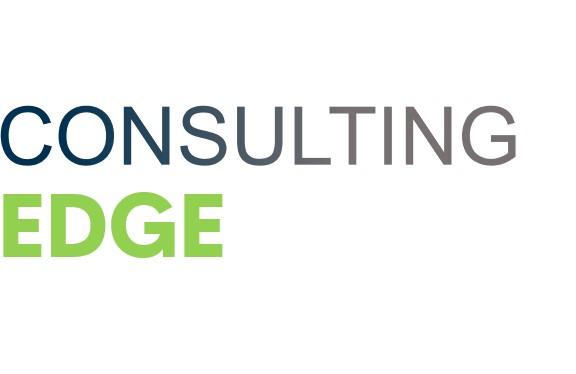The knowledge mapping is a diagram that displays knowledge and information. You use it to organize knowledge in an effective way, as well as highlight the relationships between different topics.
Knowledge maps are also useful for brainstorming new ideas and solving problems. It is a powerful business tool that can help you to improve knowledge sharing and knowledge management, as well as provide an understanding of your company’s knowledge assets.
In this blog post, we will discuss 5 exclusive ways how knowledge mapping can help you with your business!
What is Knowledge Mapping?
Knowledge mapping, or knowledge diagramming as it is sometimes called, is a visual way to organize your knowledge. Knowledge maps are typically thought of in the context of sharing information with others. But you can also use it for personal organization and knowledge retention.
There are many different types of knowledge mapping. Some knowledge maps focus on a single topic, while others display relationships between concepts and ideas. Applicability may vary depending on your industry or the task at hand.
But this is typically helpful to illustrate the relationship between disparate pieces of information in an easy-to-understand way that what to share with others.
Knowledge Mapping Types:
Knowledge mapping is a great way to help you find knowledge gaps and work on information sharing, knowledge building, knowledge retention and transfer.
There are three types of knowledge mapping – hierarchical, network, mind and radial mapping.
Hierarchical Mapping:
A hierarchical map shows the flow of data from one level to another. These knowledge maps are the most common type. They typically use boxes connected with arrows to indicate knowledge transfer from one area of knowledge to another, or how knowledge flows within an organization.
Network Mapping:
A knowledge map that shows the relationship between knowledge objects is called a knowledge network. It allows for multiple paths and more complex relationships using circles or boxes that can connect several knowledge areas together. This type is useful when dealing with large amounts of data where it may be difficult to follow hierarchical chains.
The main difference between hierarchical and network knowledge maps is how they show knowledge flow. Hierarchical knowledge mapping typically uses boxes connected by arrows to indicate knowledge transfer, while networks use nodes (circles) linked together by lines.
Mind Mapping:
Mind mapping knowledge maps are used to brainstorm knowledge. They typically use bubble shapes rather than boxes, and the lines between them do not represent knowledge transfer but instead show relationships of similar types of knowledge objects.
Radial mapping:
Radial knowledge maps connect pieces of information that are located in one spot, instead of showing how knowledge flows from source to destination. It is a knowledge diagram that uses concentric circles to visualize knowledge.
This type of mapping focuses on highlighting the relationships between single pieces of knowledge, rather than depicting how they are related in groups or clusters.
When creating a radial map, it’s best to start by identifying all your organizational resources. You can include individuals, departments or groups – and their skillsets before you begin drawing lines between them all. You can also include things like tools or equipment on this type of knowledge map.
Using Knowledge Mapping to your advantage:
Knowledge mapping is a powerful knowledge management tool that can help you be more productive and efficient. It’s the process of creating a map to show how knowledge is related, where it originates from, and what its destination will be.
There are many benefits of using knowledge mapping. That’s why it is important you incorporate this useful tool into your training process if possible. Here are just five ways how it can help you improve communication throughout your company!
Identifying knowledge gaps:
knowledge mapping can help you identify knowledge gaps that may be slowing down your company. By using this, you’ll be able to better assess the knowledge of employees and where each person’s area of expertise lies in relation to others.
It allows all members within an organization easy access to one another. So they are not required to keep repeating themselves over chains which often leads to misunderstandings.
A deeper insight of organization:
By knowledge mapping the knowledge of your employees, you’ll be able to gain a more in-depth understanding of how knowledge is shared within your company. This will then help identify areas where you can improve or expand your knowledge.
You’ll be able to share knowledge much more easily. Knowledge mapping will allow you to better explain knowledge in a visual manner where all members of your team can see it clearly! You’ll also have the ability to identify knowledge gaps and understand how knowledge is shared within an organization.
Improving decision-making abilities:
Once you implement knowledge mapping into your company, you’ll have the ability to handle knowledge much more efficiently. It will help employees become better at communicating and sharing ideas with one another.
You can also use knowledge mapping as a decision-making tool throughout an organization! With this, all employees involved in any situation will be able to easily access knowledge. This will helps them think through any challenging decisions.
Brainstorm new projects ideas:
The knowledge is ideal for brainstorming new projects or ideas! You’ll have the ability to share knowledge with one another and easily communicate.
Knowledge maps can also lead to increased productivity and creativity by encouraging brainstorming sessions between workers with different backgrounds and ideas. So they are no longer silo but share their expertise towards creating new solutions together!
Solve problems, and identify resources:
Knowledge mapping allows you to better understand knowledge within your organization. It can create a much friendlier environment where you share knowledge between all members involved in any situation!
By identifying knowledge gaps, this visual mapping will help improve communication and decision-making abilities throughout an entire company. This will also help improve knowledge sharing and brainstorming new project ideas! You’ll also be able to easily handle knowledge much more efficiently.
Conclusion:
From the above benefits, you can see knowledge mapping is an extremely useful tool. It will help your employees communicate and share knowledge with one another. This knowledge sharing can improve decision-making, brainstorming new project ideas, and even solve problems.
Therefore, this is definitely something you should be considering if you haven’t already implemented it into your organization.






